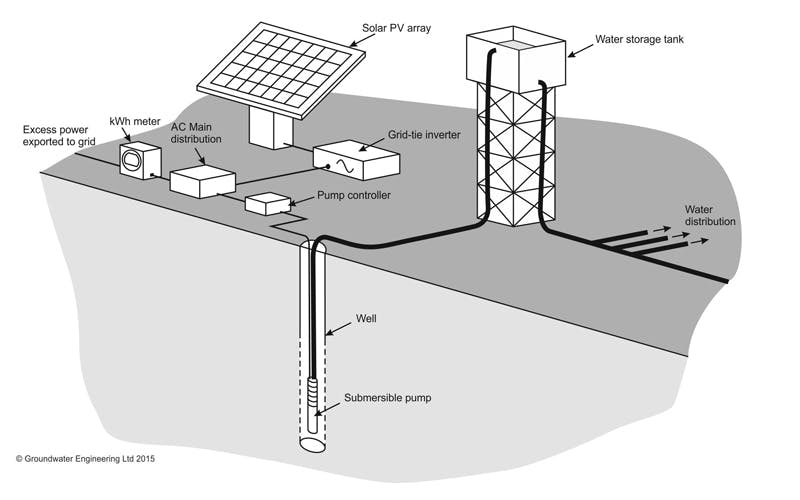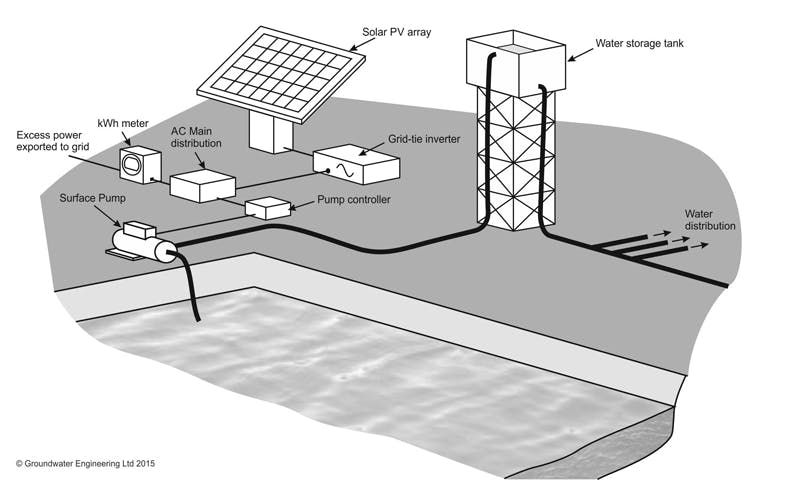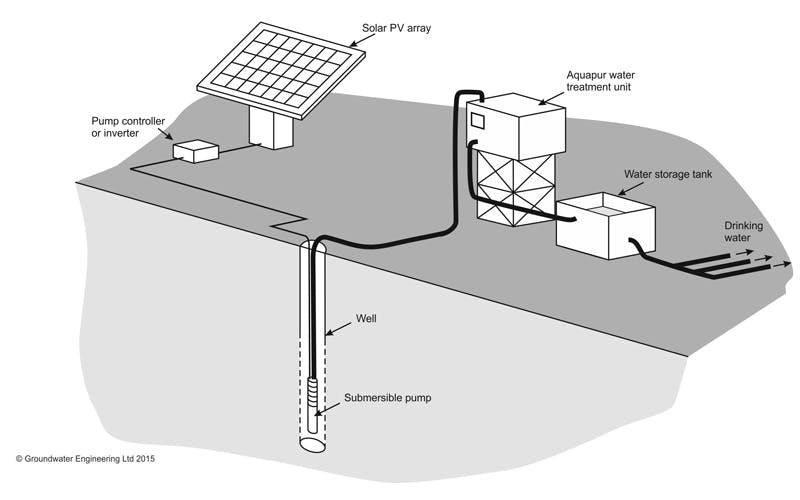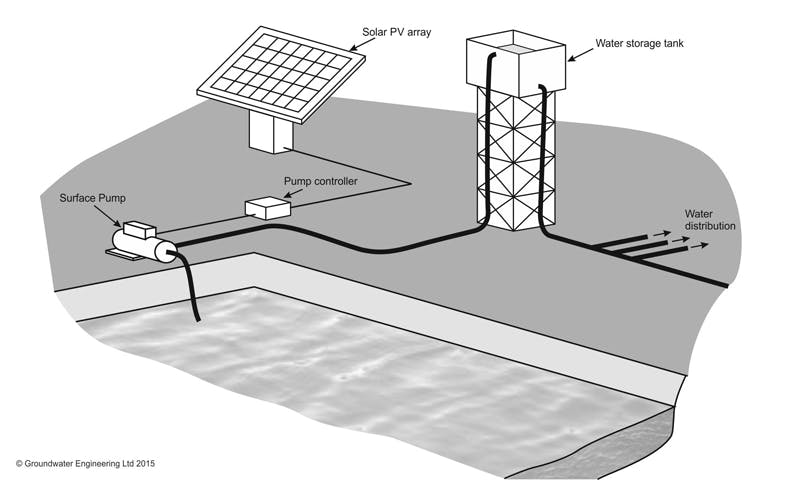Solar Water Pumping





Solar water pumping systems can be a practical and affordable solution used to provide reliable and cost effective water supplies where there is no grid power or where power supply is unreliable. The advantages of these systems include:
- Solar pumps operate anywhere the sun shines
- System productivity increases in summer when water requirement is usually greater
- Require minimal service and maintenance
- Powered by clean, renewable energy
- Virtually free to operate, compared to the cost of diesel-powered generators and grid electricity which is constantly increasing
- Easily relocated to meet seasonal or variable location needs
Because solar systems only operate during daylight hours the water pumped out is typically stored in a storage tank for use 24 hours per day, to ensure constant availability of water. The tank capacity should be designed to allow for rainy or cloudy days (no sun days) when pumping will be limited. The size and dimensions of the storage tank is determined based on the required number of day’s storage. If large storage tanks are impractical, back up batteries or a generator can also be incorporated in the design to allow for prolonged periods of no sun days that will eventually empty the water storage tank.
Possible applications include:
- Livestock – cattle watering and fish farming
- Agriculture – irrigation or crop watering
- Recreational – swimming pool circulation pumps; spa
- Residential – water supply for drinking or pressure boosting
- Industrial – water supply for businesses
Pumping can be by submersible pumps, commonly used for deeper wells, where surface pumps cannot be used because the water level is too deep below ground level (below approximately 6 meters depth). These borehole pumps are specially designed to have a small outside diameter so they can be suspended below the water level in the well and connected to an output pipe that extends up to the surface. The right pump for each application will depend on the required pumping rates and pumping height and distance.
Alternatively, surface pumps are used to move water from sources such as shallow wells, ponds, streams, and tanks, where the pump itself can be located no more than 6 meters above the water level. There are many types of pump available; the choice will depend on how much water per day needs to be moved and the height and distance to the delivery point (such as the storage tank). Pump efficiency and reliability can be improved if suction lift can be minimized to just a few meters.
Getting the most benefit from solar water pumping systems requires research and design before the first PV module and a pump is purchased and installed. Each component must be carefully matched, and proper planning is essential – so the final system will be efficient and reliable and can function for many years to come. Groundwater Engineering’s team has extensive experience in solar PV and solar water pumping systems and we can offer a complete design and installation service to meet client needs.
Blog
Dewatering for Basement Construction
12 March 2016Groundwater can be a significant problem when excavating for basement construction. This blog discusses the available techniques that can be used to dewater during basement construction.
Read More




